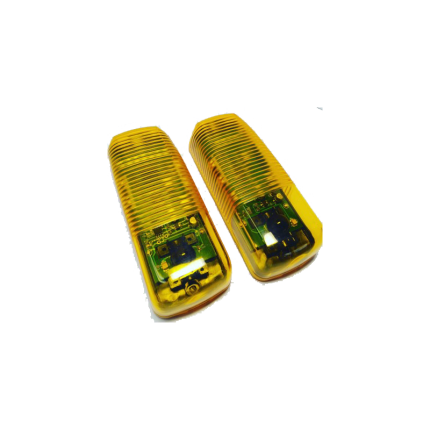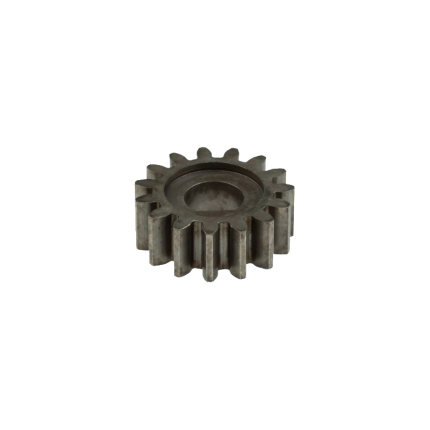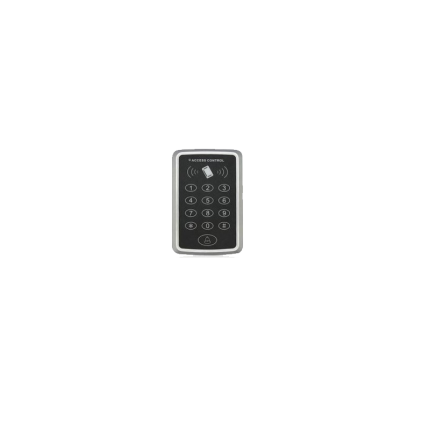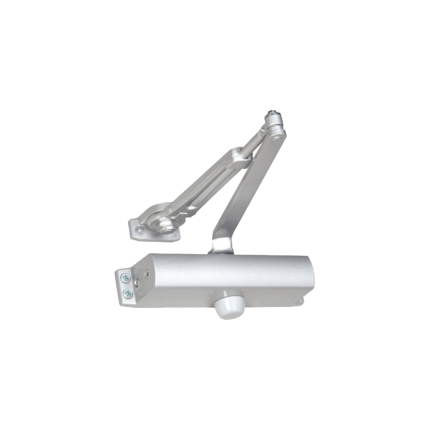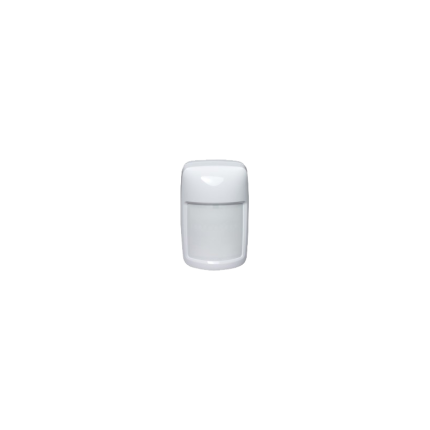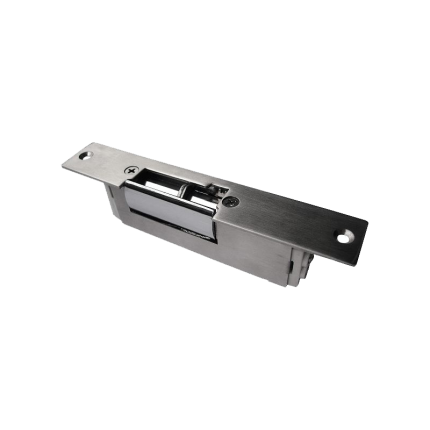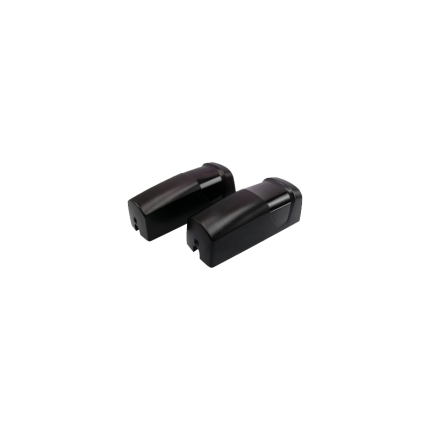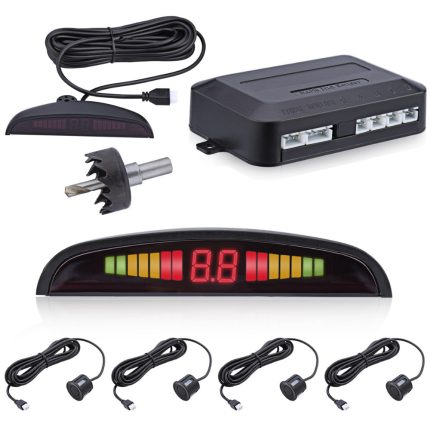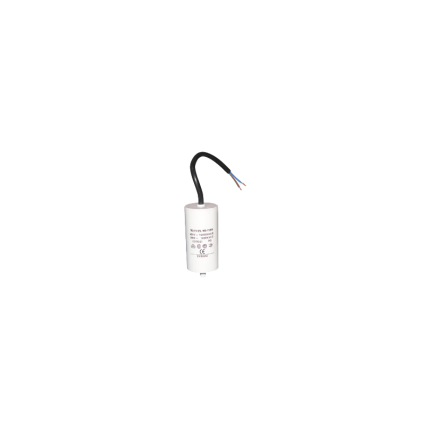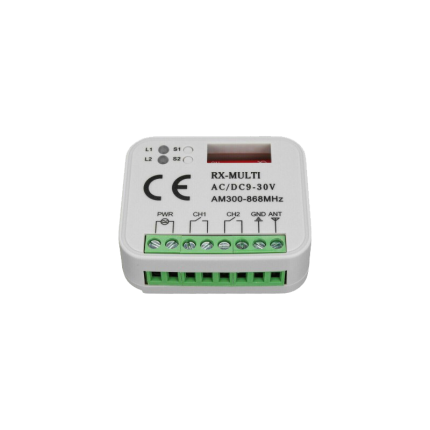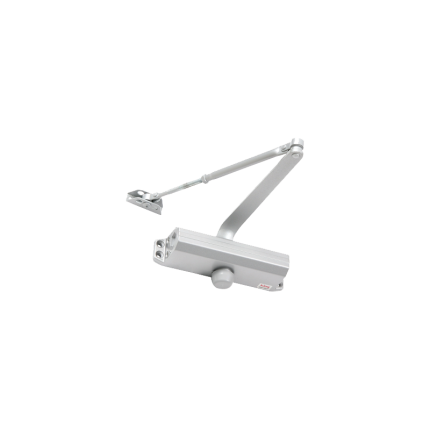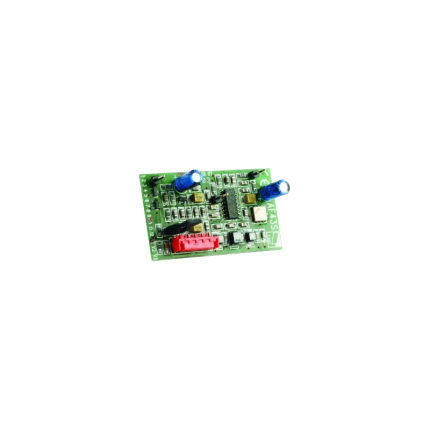Shop
Safety sensor – P51033H
Ship or pick up from our office.
Safety sensor - P51033H
*NO/NC *AC/DC 12-24 V *Receiving Range: 12 Meters *IP 54 *External LED flash lamp signal (AC/DC 12V-24 V) *The safety sensor included the LED flash lightSliding gate operator gear
Ship or pick up from our office.
Sliding gate operator gear
The sliding gate operator gear is a crucial component within an automatic sliding gate system. It's essentially the mechanism that translates the rotational power from the electric motor into the linear motion needed to open and close a sliding gate. Here's how it generally works:- Pinion Gear: Inside the gate operator's housing, there's a pinion gear. This is a small, typically round gear directly connected to the motor. When the motor turns, it rotates the pinion gear.
- Rack Gear: Attached to the bottom edge of the sliding gate itself is a rack gear. This is a long, straight bar with teeth that mesh with the teeth of the pinion gear.
- Translating Motion: As the motor spins the pinion gear, its teeth engage with the teeth on the rack gear. This engagement causes the rack gear (and thus the entire gate) to move horizontally along its track. It's similar to how a train moves along a toothed railway or a car's steering rack works.
Keypad KO05SC107
Ship or pick up from our office.
Keypad KO05SC107
*Waterproof Keypad Version *EM/ID card/tag reader *Backlight Keypad *1000 Users *DC 12 V *Rain Shield Cover included in the keypad packageDoor closer -DCL062
Ship or pick up from our office.
Door closer -DCL062
Capacity: 75 Kg The "DCL062" appears to be a model number for a door closer manufactured by Royal Electronics Technology Center Co. A door closer is a mechanical device that automatically closes a door after it has been opened. Its primary functions include:- Controlled Closing: Regulates the speed and force of the door's closing action, preventing slamming and potential damage.
- Enhanced Security: Ensures doors are properly closed and latched, improving security by preventing unauthorized entry.
- Fire Safety: Crucial for fire doors, as it ensures the door closes completely to prevent the spread of fire and smoke.
- Accessibility: Some models are designed to meet ADA requirements for opening force and closing speed.
- Energy Efficiency: Helps reduce drafts and air leakage by ensuring doors close properly.
- Adjustable Power Size: Allows for setting the closing force based on door weight and width.
- Adjustable Sweep/Speed and Latching: Controls how quickly the door closes and how forcefully it latches.
- Backcheck: Provides resistance to prevent the door from opening too quickly or violently.
- Mounting Options: Can be installed in various ways (regular arm, parallel arm, top jamb, concealed, floor spring).
- Certifications: Often tested and certified to standards like ANSI/BHMA, BS EN, or UL for performance and fire safety.
PIR Infrared Sensor – wired
Ship or pick up from our office.
PIR Infrared Sensor – wired
A PIR (Passive Infrared) sensor is an electronic sensor that detects infrared (IR) light radiating from objects within its field of view. It's called "passive" because it doesn't emit any energy itself; instead, it passively monitors the existing infrared radiation in its surroundings. All objects with a temperature above absolute zero emit some level of infrared radiation, and the hotter an object, the more radiation it emits. PIR sensors are particularly effective at detecting the infrared radiation emitted by warm bodies, such as humans and animals. How PIR Sensors Work At the core of a PIR sensor is a pyroelectric sensor, a material that generates an electrical charge when exposed to changes in infrared radiation. To detect motion, most PIR sensors use a dual-sensor design:- Dual Elements: The pyroelectric sensor is typically divided into two halves or elements, wired in a way that they cancel each other out when no motion is detected. This means that if both halves receive the same amount of IR radiation (e.g., from the ambient room temperature), their signals balance, and no output is generated.
- Fresnel Lens: A Fresnel lens is often placed in front of the pyroelectric sensor. This special lens has multiple facets that help to focus infrared light from different angles onto the sensor elements, increasing its range and sensitivity, and creating distinct detection zones.
- Motion Detection: When a warm object, like a person, moves across the sensor's field of view, it first enters one detection zone (and thus one half of the pyroelectric sensor) and then the other. This causes a differential change in the amount of infrared radiation impinging on each half of the sensor. This difference in IR energy between the two halves creates an electrical signal.
- Signal Processing: The sensor's internal circuitry processes this change in voltage. If the change is significant enough (indicating a "moving heat source"), the sensor triggers an output signal.
- Security Systems: The PIR infrared sensor are a fundamental component of burglar alarms and motion-activated security cameras, detecting intruders by their body heat.
- Automatic Lighting: PIR infrared sensors are used in homes, offices, and public spaces to automatically turn lights on when someone enters a room or area and off when it's unoccupied, leading to energy savings.
- Smart Home Automation: The PIR infrared sensor play a crucial role in smart homes, triggering various automated actions like adjusting thermostats, turning on appliances, or opening doors based on occupancy.
- Automatic Doors: Many automatic door systems, like those found in shopping malls, use PIR sensors to detect approaching individuals and open the doors.
- Industrial Monitoring: They can be used to monitor machinery movement or detect the presence of personnel in hazardous areas for safety purposes.
- Wildlife Tracking and Research: Researchers use them to monitor animal movements unobtrusively.
Door Strike Lock
Ship or pick up from our office.
Door Strike Lock
An electric strike is an electromechanical lock release device that replaces a standard door strike plate.
It allows a door to be opened remotely, typically via an access control system, without manually retracting the latch. When activated, the electric strike releases the latch, enabling the door to be opened.
Here's a more detailed explanation:
Functionality:
-
Replaces Standard Strike:Electric strikes are installed in the door frame, taking the place of the standard strike plate.
-
Remote Release:They are designed to work with various access control systems, such as keypads, card readers, or intercoms.
-
Activation:When an authorized signal is received (e.g., a code is entered, a card is swiped), the electric strike releases the latch, allowing the door to be opened.
-
Fail-Safe or Fail-Secure:Electric strikes can be configured in either a fail-safe or fail-secure mode.
- Fail-safe: In this mode, the door unlocks when power is lost, making it suitable for safety applications where access is needed during power outages.
- Fail-secure: In this mode, the door remains locked when power is lost, requiring power to unlock, making it suitable for high-security applications.
- Fail-safe: In this mode, the door unlocks when power is lost, making it suitable for safety applications where access is needed during power outages.
How it Works:
- The electric strike contains a solenoid, which is an electromagnet.
- When the solenoid is activated by an electrical signal, it moves a component (like an armature) that allows the latch to move freely.
- This movement releases the door, allowing it to be opened.
Key Differences from Other Locks:
-
Electric vs. Magnetic Locks:Unlike magnetic locks, which use powerful magnets to hold the door closed, electric strikes release the latch mechanism.
-
Remote Access:Electric strikes offer remote access control, allowing doors to be unlocked without manual intervention.
-
Versatility:They can be used with various locking mechanisms, including cylindrical, mortise, and rim exit devices.
Common Applications:
-
Access Control:Electric strikes are a core component of access control systems in commercial and residential settings.
-
Security:They provide a higher level of security compared to standard locks, especially when used with fail-secure configurations.
-
Safety:In fail-safe configurations, they ensure safe egress during emergencies.
-
Specific Areas:They are commonly found in reception areas, daycare centers, and other locations where controlled access is needed.
Safety Sensor P52000H
Ship or pick up from our office.
Safety Sensor P52000H
IP Rating: IP54
Certification: CE
Working Voltage: 12V-24V AC/DC
Temperature Rane: -20ºC to 60 ºC
Protection Index: IP54
Photocell Wavelength: 940nm
Receiver Range: More Than 12m
Weight: 139g
A gate opener safety sensor is a crucial component of automated gate systems designed to prevent accidents and damage by detecting obstructions in the gate's path.
These sensors, often photoelectric, use an infrared beam to monitor the area and trigger the gate to stop or reverse if something is blocking its movement.
How it works:
-
Transmitter and Receiver:A safety sensor typically consists of a transmitter that emits an infrared light beam and a receiver that detects the beam.
-
Obstruction Detection:When an object, person, or vehicle interrupts the beam, the receiver signals the gate operator to stop or reverse the gate's movement.
-
Safety Feature:This mechanism prevents the gate from closing on anything or anyone, ensuring safety and preventing potential damage.
Types of Safety Sensors:
-
Photoelectric Sensors (Photo Eyes):These are the most common type, using an infrared beam to detect obstructions.
-
Safety Edges:These sensors are typically placed along the edge of the gate and trigger a stop or reverse when they encounter pressure.
-
Induction Loops:These sensors are embedded in the ground and detect vehicles as they pass over them, triggering the gate to open or close.
Importance:
-
Safety:The primary function is to prevent accidents and injuries by stopping or reversing the gate when an obstruction is present.
-
Preventing Damage:By detecting obstructions, these sensors help avoid damage to the gate, vehicles, or anything else in its path.
-
Compliance:Safety sensors are often required for automated gates to meet safety regulations and standards.
Common Issues:
-
Misalignment:If the sensor is misaligned, the infrared beam may not reach the receiver, causing the gate to malfunction.
-
Obstructions:Debris, dirt, or other obstructions can interfere with the beam and trigger false alarms.
-
Sensor Failure:Like any electronic device, sensors can fail over time, requiring replacement.
Car parking sensor kit
Gate operator capacitor
Ship or pick up from our office.
Gate operator capacitor
A gate operator capacitor is an electrical component that assists the motor in a gate opener system to start and run smoothly.
It stores and releases electrical energy to provide the initial torque needed to get the motor going and to ensure consistent operation. These capacitors are crucial for both swing and sliding gate openers that are powered by AC.
Here's a more detailed explanation:
-
Starting the Motor:When a gate opener is activated, the motor needs a significant amount of power to begin rotating. The capacitor provides a burst of electrical energy to help the motor overcome its inertia and start moving.
-
Maintaining Smooth Operation:Once the motor is running, the capacitor helps to smooth out the electrical current, ensuring consistent and efficient operation. This prevents the motor from stalling or experiencing performance issues due to voltage fluctuations.
-
Types of Capacitors:Gate operator capacitors can be categorized as either start capacitors or run capacitors.
- Start capacitors: are used to provide the initial surge of power needed to get the motor rotating.
- Run capacitors: help to maintain consistent motor performance during operation.
- Start capacitors: are used to provide the initial surge of power needed to get the motor rotating.
-
Common Applications:Capacitors are used in various gate operator systems, including:
- Swing gate openers
- Sliding gate openers
- Commercial and residential gate systems
- Barrier arms
- Overhead doors
- Swing gate openers
-
Compatibility:Different gate operators may require specific types and sizes of capacitors, so it's important to choose the right replacement capacitor for your system.
Radio receiver RX2CH-Multi Code
Ship or pick up from our office.
Radio receiver RX2CH-Multi Code
(Compatible with the wireless keypad control KW402 & KW125 *#8) *COMPATIBILITY LIST: NICE, FAAC, Liftmaster, Sommer, Ditec, V2, Marantec, etc... *AC/DC 12-24 V *2 Channels *AM/FM 300-869 MHz *Capacity: UnlimitedDoor closer -DCL061
Ship or pick up from our office.
Door closer -DCL061
The "Door closer -DCL061" appears to refer to a specific model of door closer, primarily offered by Royal Electronics Technology Center Co. Based on the information found, here's what we know about it:- Type: DCL061 is a mechanical door closer.
- Capacity: Door closer -DCL061 has a capacity of 45 Kg, indicating it's suitable for doors up to that weight.
- Dimensions: Door closer -DCL061 dimensions are 25 × 9 × 9 cm.
- Purpose: Like all door closers, it's designed to automatically close a door in a controlled manner after it has been opened. This serves various purposes, including:
- Security: Ensuring doors are not left open inadvertently.
- Fire Safety: Crucial for fire doors to prevent the spread of fire and smoke.
- Energy Efficiency: Helping to maintain indoor temperatures by ensuring doors close properly.
- Accessibility and Safety: Preventing doors from slamming, reducing the risk of injury, and allowing controlled passage for individuals with limited mobility.
Delay relay 0.5 Sec – AC 24 V to DC 12 V
Ship or pick up from our office.
Delay relay 0.5 Sec - AC 24 V to DC 12 V
A "delay relay 0.5 Sec - AC 24 V to DC 24 V" is a time delay relay that is designed to:- Operate with a control voltage of 24 volts, which can be either Alternating Current (AC) or Direct Current (DC). This dual compatibility (AC/DC 24V) is a key feature, as many relays are specific to one type of current.
- Introduce a delay of 0.5 seconds before its contacts change state. This delay can be an "on-delay" (contacts close/open after 0.5 seconds when power is applied) or an "off-delay" (contacts remain closed/open for 0.5 seconds after power is removed), or other timing functions depending on the specific relay's design.
- Switch or control a separate circuit, which may be a 24V DC circuit. The "AC 24V to DC 24V" in the description refers to the relay's input power compatibility (it can be powered by either 24V AC or 24V DC) and its output capability (it's often used to control 24V DC loads). It is not a direct AC to DC converter for the load it's switching, but rather indicates its flexible control voltage. The relay itself doesn't convert the power; it merely switches it on or off after a delay. If the controlled circuit specifically requires DC, the relay's contacts would simply switch the 24V DC power to that circuit.
- Prevent false triggering: A brief fluctuation in voltage or a momentary signal might cause immediate activation in a standard relay. A short delay (like 0.5 seconds) can prevent such nuisance activations.
- Create timed sequences: In automated processes, certain steps may need to occur in a specific order with set delays in between. For example, a delay relay could ensure one motor starts before another or that a safety purge cycle completes before a furnace ignites.
- Control motor starts/stops: They can be used for "soft starting" motors, gradually increasing voltage to reduce inrush current, or for ensuring a motor has fully stopped before another action begins.
- HVAC systems: They prevent "short cycling" of compressors, which can damage the unit, by introducing a delay between successive starts.
- Lighting control: Ensuring lights stay on for a set period after activation (e.g., in stairwells) or controlling emergency lighting.
- Security systems: Providing a brief delay before an alarm triggers, allowing authorized personnel to disarm the system.
- On-delay (Delay on Make): The most common type. The contacts change state only after the set time delay has elapsed after the control voltage is applied.
- Off-delay (Delay on Break): The contacts change state immediately when the control voltage is applied, but only return to their original state after the set time delay has elapsed after the control voltage is removed.
- Interval: The contacts change state immediately when the control voltage is applied, and then return to their original state after the set time delay.
- Repeat Cycle: The relay continuously cycles between on and off states with specific time delays as long as the control voltage is applied.

